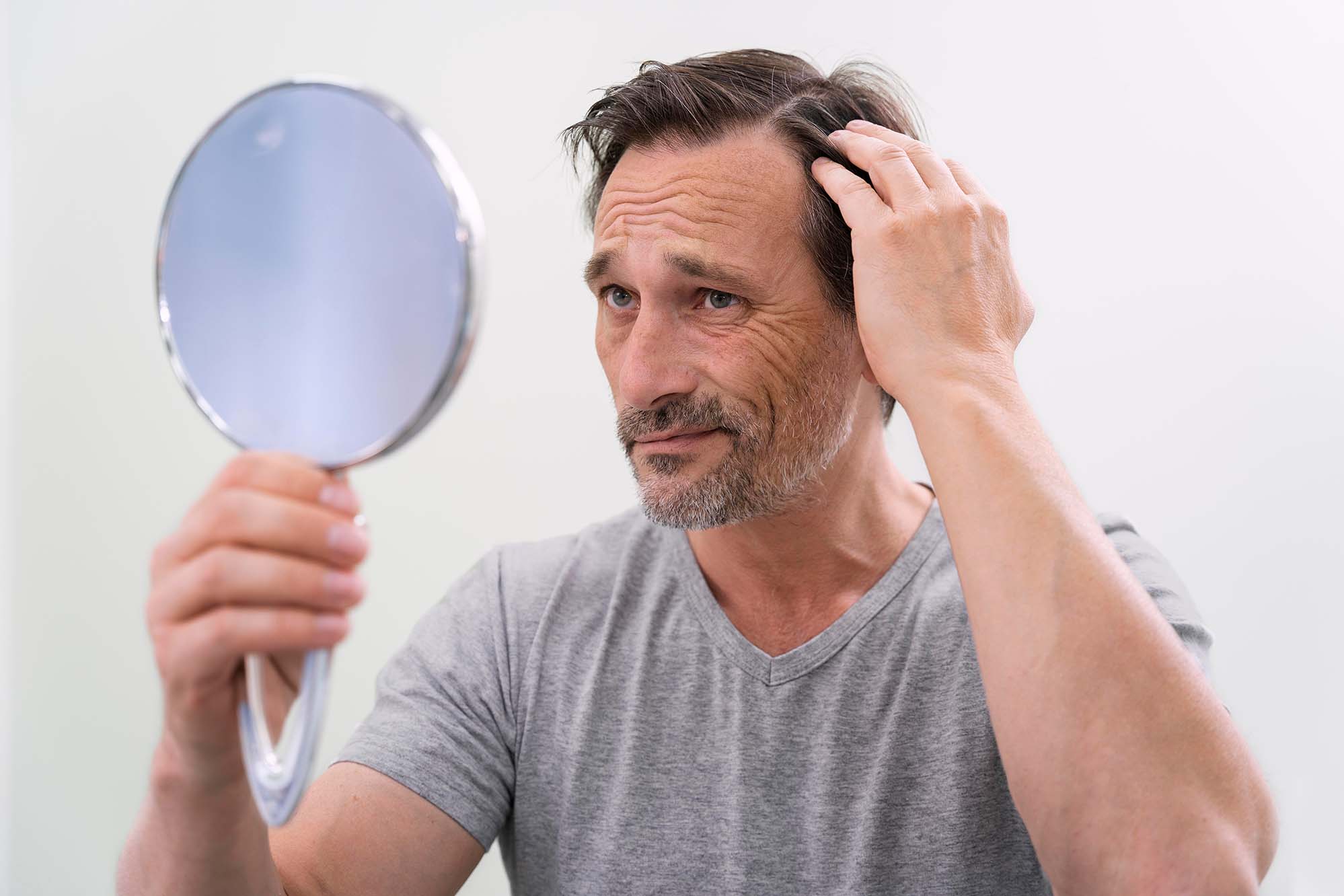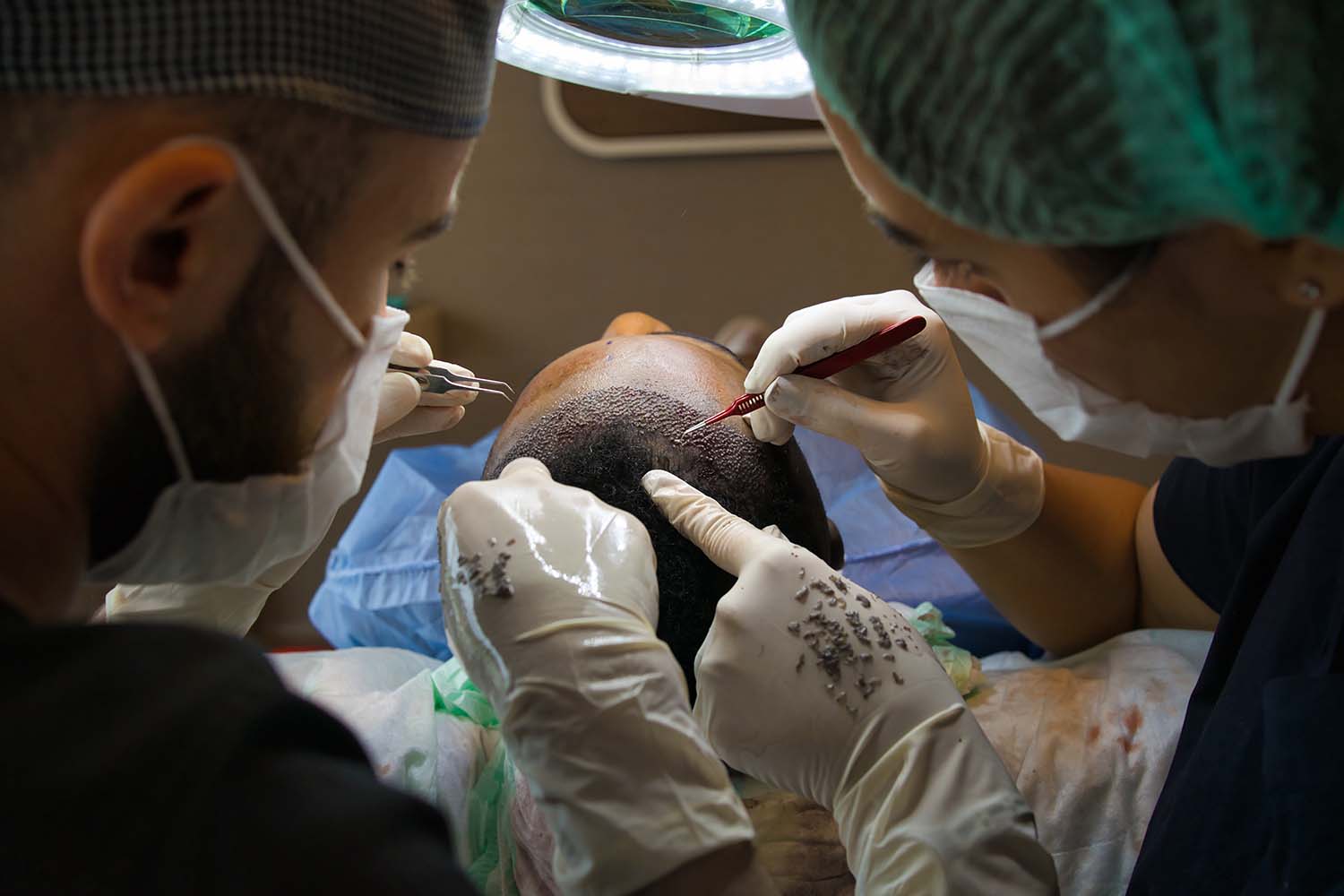Your search for the Best Hair Transplant in Chennai ends here.
Causes for Hair Fall
Androgenetic Alopecia or Male Pattern Baldness is primarily caused by a combination of:
- Aging
- A change in hormones
- A family history of baldness
- Nutritional deficiencies
- Poor hair care
As a rule, the earlier hair loss begins, the more severe the baldness will become.Some Medical illness and Skin diseases can also cause hair loss which need appropriate treatment.Aura Plastic can help you in Hair Transplant and Hair Fall treatment.


For Whom its Suitable
Can I undergo a Hair Transplant
You may be a candidate for hair transplant surgery if you have healthy hair growth at the back and sides of the head to serve as donor areas.
Think carefully and discuss in detail about your expectations with your surgeon.It’s important to understand that all hair replacement techniques use your existing hair. The goal of surgery is to find the most efficient uses for existing hair.
End to End Process for the treatment
Treatment Process
Consulting
Assessment of hair loss, diagnosis and medical treatment. Patient education about male pattern baldness, its causes, need for continued medical treatment and hair care
Trichoscopy
Objective method of documenting Hair Loss, with better patient participation in understanding the hair loss and plan of treatment, as they get to see the magnified images
Transplant Counselling
Discussion on the plan of management, trial marking, expectations vs realistic possibilities , benefits vs risks of the procedure with outlining of pre and post op protocol
Checklist
Done days prior to procedure. Clarification of further doubts, verification of pre surgical workup , consent form signing done, Pre Op instructions emphasised and given in print.
Hair Transplant
Immediate post procedure instructions emphasised and given in print after the surgery.
Followup
Periodic post op follow ups with appropriate advice on self care and medications , PRP injections might be scheduled as supportive therapy with Trichoscopy evaluations in the late post op.
Frequently Asked Questions
Hair Transplant
Hair Loss
At present, the accepted drugs for combating Hair Loss are Minoxidil and Finasteride. Appropriate Nutrition supplements also help along with Low level Laser therapy. Treating local scalp conditions like dandruff also is important along with appropriate Hair care and Lifestyle changes.
Following hair transplant it is advisable to undergo medical treatment and regenerative treatment for maintenance of hairs ( existing and transplanted ).
Hair transplantation: Hair from your own scalp at the back is taken out and would be implanted on your bald area of scalp. The fine transplanted hair is resistant to hormones and won’t fall off. These transferred follicles develop blood supply from the recipient site and can grow naturally.
- More natural-looking results
- Superior coverage
- More effective results for gray or light colored hair.
- Hair transplant success rates of more than 95 percent
Hair follicles are typically Harvested using one of these two techniques:
- Follicular Unit Hair Transplantation (FUT): Hair units are removed from a donor strip that has been excised from the donor area.
- Follicular Unit Extraction (FUE): Individual hair units are removed directly from the donor area by a micro-punch individually, follicle by follicle, and transplanted to thinning areas.
An FUE hair transplant does not leave a linear scar.
It is particularly indicated if:
- Donor site healed poorly after previous procedures and wish to camouflage scars
- Have a very tight scalp, which may make you a poor candidate for STRIP TECHNIQUE.
A physician can help you determine which method is best for you, or if a combination of both will give you the results you desire.
Hair Transplant
Back of Scalp; Beard and Body hair (chest mainly). harvest is done in such a way that the donor site loss is not obviously noticeable.
Hair transplant surgery is normally safe when performed by a qualified, experienced Plastic surgeon.Death in hair transplant is mainly due to anaphylactic shock which means abnormal body immunity response to any medication injected in the body. This kind of shock can happen to anyone undergoing any procedure under local or general anaesthesia. Another rare cause of death in Hair transplant is local anaesthesia overdose which normally is prevented by exact measurement of local anaesthesia to be injected as per body weight and to look for any obvious early sign of toxicity.
Hair starts growing by 4 months more or less and good growth is seen by 6 months .Till 12 months of hair transplant few follicles can grow. the actual result of assessment of hair transplant is by 12 to 18 months..
Hair line wavy and natural and with good direction and density in front area and good circular pattern in crown area is considered to be good hair transplant.
In transplant procedures, there is a small risk that some of the grafts won’t “take.” Although it is normal for the hair contained within the plugs to fall out before establishing regrowth in its new location, sometimes the hair follicle dies and surgery must be repeated.
Hair loss can also progress after surgery, due to continued Hormone influence and an unnatural, “patchy” look may result-especially if the newly-placed hair lies next to patches of hair that continue to thin out. If this happens, additional surgery may be required.
Immediate issues : Swelling, pain , discomfort,infection,bleeding and drug allergy might happen but are usually could be well managed by experienced hair transplant surgeon.
Early Postop Issues : Itching, pain, heaviness, numbness or altered sensations , excessive scabbing, Cyst formation are some uncommon side effects that can happen.
What are common post op Do’s and Don’ts?
Patient has to lie down straight and keep the grafted site moist with Normal saline spray for 3 to 7 days.Routine medicines like painkillers, anti itching and antibiotics and antacids will be prescribed. Donor area dressing will be opened after 48 to 72 hours and self care will be taught.
Patients can resume activities of daily living at home from the very next day and can resume travel after donor dressing is removed.
Avoid touching and rubbing the grafts, bending forwards and any vigorous movement of head, grafts not to be exposed to direct sunlight and /or wind.Smoking is to be stopped.
